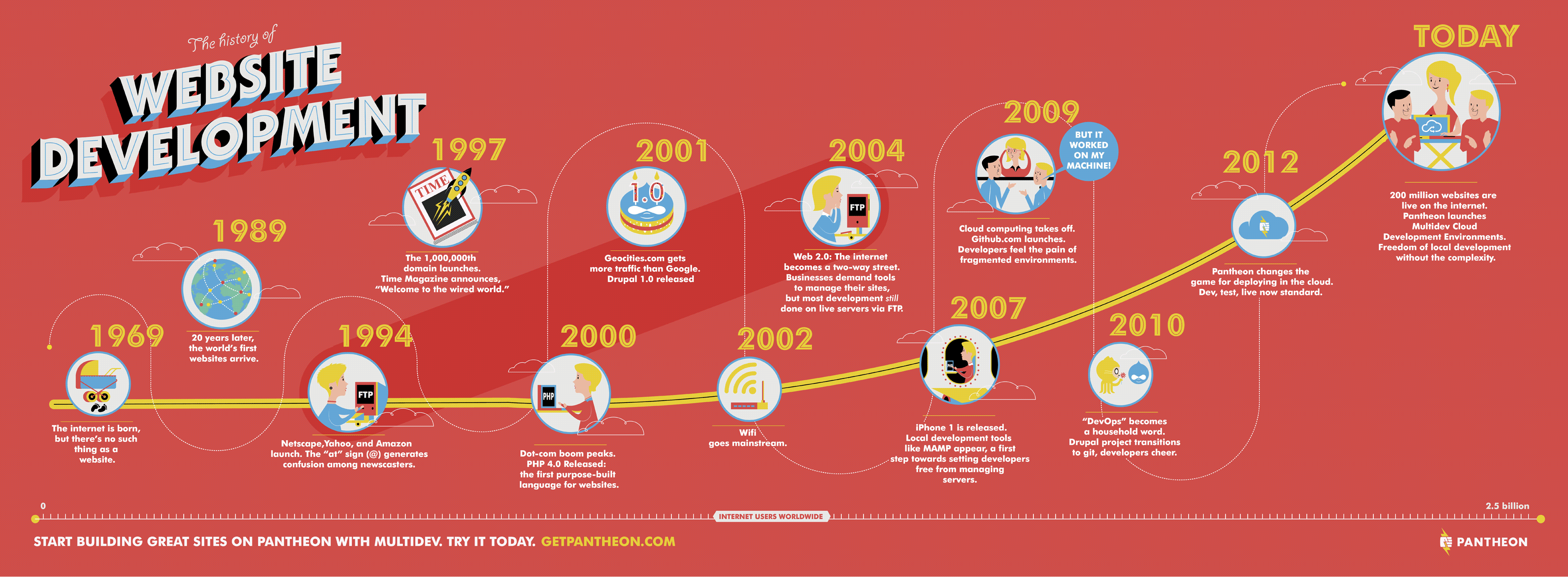Benefits Of Web Development For Business
Introduction
A web site is meant to communicate a message and be successful at doing so. The Determining Intelligent Website project is trying to identify the key factors that make a good web site. This paper will bring together key ideas from the first two phases: Websites of Interest and Expert Evaluations, and provide a plan and framework for the next phase where we build an intelligent tool for web developers. So to sum the last two phases up, they were about learning and understanding what makes a good web site. Now it is time to put that knowledge into practice. We are past learning how to create a web site with class project 5 and it is time to take our personal or professional web pages to the next level.
This paper is not only documentation for future research, but we want it to be a resource for anyone wanting to build a quality web site. This paper will not only help you build a web site, but a good web site. Now that we know the current state of web pages, the following questions come to mind: – How can we build a web site that is effective? – How can we communicate with our users and get that message across? – How can we persuade users to come back? We can make an effort to answer these questions and design specific goals and success criteria for a web site. With this in mind, we can develop a method of developing web sites based on knowledge and understanding of our targeted users.

See How innois Can Drive More Traffic to Your Website
SEO – Unlock more SEO traffic. See rear results.
Content Marketing – Our team creates epic content that will get glared. get links. and attract traffic
Paid Media – Effective paid strategies with clear ROI.
Web development refers to the intricacies of building a website and online presence that with time become important to business marketing. Web development includes aspects such as web design, web publishing, web programming, and database management. While the terms “web design” and “web development” are often used interchangeably, web design is technically a subset of the broader category of web development. This is because to build a website, a developer must go through a sequence of tasks (that may or may not be sequential). The first task is gathering information which is essentially the understanding of the website to be developed; who the audience will be, what the website will contain, and so forth. Next is planning, that is a site map enabling the developer to plan the structure and technologies used such as frames, CMS (Content Management System), and PHP.

In addition, there is the need for database management in web development. A website will often have an abundance of data that needs to be sorted, and a database is a must to allow this data to be easily accessed. Finally, the result of all the hard work is a functional, high-quality website. An experienced developer will test the site.
Functionality testing using a checklist ensures that all functionality of the website is checked; such as form submission, cookie testing, and testing of compiled languages (Java). In addition, a dummy run while the website is still in the development environment is run, just to spot any errors as discount blank. Once the website is ready and live, it is critical to maintain the site. Post-production maintenance and promotion can consume a great deal of a developer’s time.
At the maintenance stage, the developer will need to update features that are not functioning properly and also check the site on newly released browser versions to ensure the site functions correctly on all internet platforms. This may require a rework of some of the website’s code. At a promotional level, developers make a site ready for the public with a strong emphasis on marketing campaigns. This process is what a web development cycle is. While the terms “web design” and “web development” are often used interchangeably, web design is technically a subset of the broader category that is “web development”.
Evolution of Website Development
Web development has been around since the inception of the World Wide Web. The commercialization of the web for businesses followed by the inception of e-commerce and steady progression of businesses to web-based solutions. We also must consider the effect of mobile computing on web development in the form of mobile web applications, that are compatible with the growing number of smartphones and tablet PCs. The future holds an interesting time for web development and it will be intriguing to follow the developments with new technologies in the coming years. The most early form of web development took place with the inception of the World Wide Web itself, and it involved various forms of identifying information and thereby sorting it. The information form was pages of text and the sorting was accomplished via methods of indexing. This form of web development was simply of server-side scripting and content organization. The basic form of web development has changed very little during the recent history of the web: the main changes have been more efficient ways of sorting and displaying the content.

Image source :https://www.getpantheon.com/blog/history-website-development-infographic
An example of a recent change in server-side scripting technology is the introduction of AJAX. This is a method of client-side scripting involving the use of a language called JavaScript. Using AJAX, web developers are able to perform various ‘behind the scenes’ operations, without need of refreshing the whole page. It’s used widely in today’s web with major implementations like Google Maps and Facebook. Client-side scripting was, however, the forefront of web development during the late 90’s to the mid-2000s with the infamous browser wars, where companies like Microsoft and Netscape fought to produce the best browser platform. A lot of what was created in this era would form the foundation for the modern web and a good portion of it is still in use today.
One just has to consider the abundance of websites and web applications still using languages like JavaScript, and languages that are closely related like ActionScript (used with Adobe Flash) and VBScript. Today’s most modern form of web development is known as Web 2.0. This term is widely disputed in its meaning, but it’s generally used to describe a more user-friendly and interactive web. Looking to the future, one of the largest selections of jobs and opportunities for web developers will lay in the field of e-commerce.
This is due to the recent rise in popularity with online purchasing and the complex methods used to sort and present information for the consumer to make a satisfactory purchase. Another very recent but fast-growing web development job market lays in the field of web applications development. This is due to the recent abilities of web-enabled programs to circumvent the native desktop program using novel platforms. Web applications often share many similarities with its desktop equivalent and in some cases it has completely replaced it. An example of a web application is the Microsoft Office Live suite, that has well-known programs like Microsoft Word in web format. Finally, web development will see a great deal of work in mobile web development with a huge demand for websites specially catered to mobile devices and smartphones.
An example of a recent change in server-side scripting technology is the introduction of AJAX. This is a method of client-side scripting involving the use of a language called JavaScript. Using AJAX, web developers are able to perform various ‘behind the scenes’ operations, without need of refreshing the whole page. It’s used widely in today’s web with major implementations like Google Maps and Facebook. Client-side scripting was, however, the forefront of web development during the late 90’s to the mid-2000s with the infamous browser wars, where companies like Microsoft and Netscape fought to produce the best browser platform. A lot of what was created in this era would form the foundation for the modern web and a good portion of it is still in use today.
One just has to consider the abundance of websites and web applications still using languages like JavaScript, and languages that are closely related like ActionScript (used with Adobe Flash) and VBScript. Today’s most modern form of web development is known as Web 2.0. This term is widely disputed in its meaning, but it’s generally used to describe a more user-friendly and interactive web. Looking to the future, one of the largest selections of jobs and opportunities for web developers will lay in the field of e-commerce.
This is due to the recent rise in popularity with online purchasing and the complex methods used to sort and present information for the consumer to make a satisfactory purchase. Another very recent but fast-growing web development job market lays in the field of web applications development. This is due to the recent abilities of web-enabled programs to circumvent the native desktop program using novel platforms. Web applications often share many similarities with its desktop equivalent and in some cases it has completely replaced it. An example of a web application is the Microsoft Office Live suite, that has well-known programs like Microsoft Word in web format. Finally, web development will see a great deal of work in mobile web development with a huge demand for websites specially catered to mobile devices and smartphones.
Conclusion
Web development is a vast subject that brings comprehensive improvement to our lives. It combines engineering, design, marketing, and various skills. A developer should be able to provide practical solutions by combining these skills. Web development can automate tasks, improve data storage and retrieval, and make information easily accessible. Developers working on these projects should be proud of their work.




